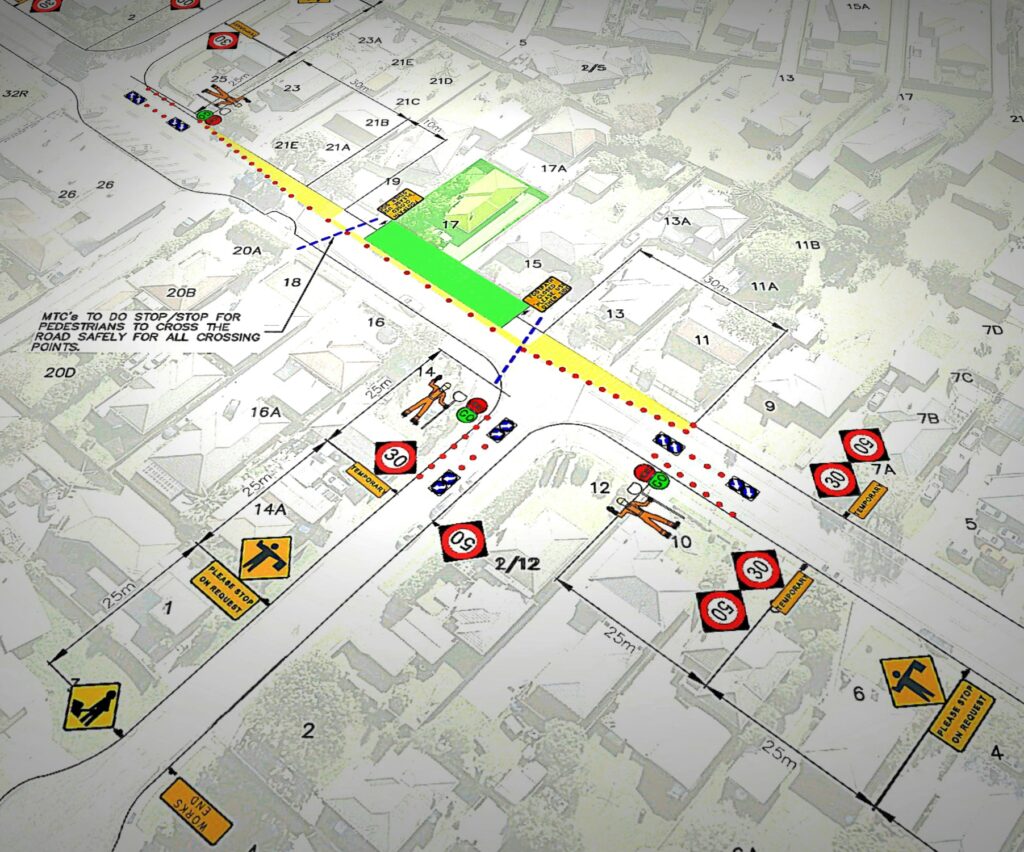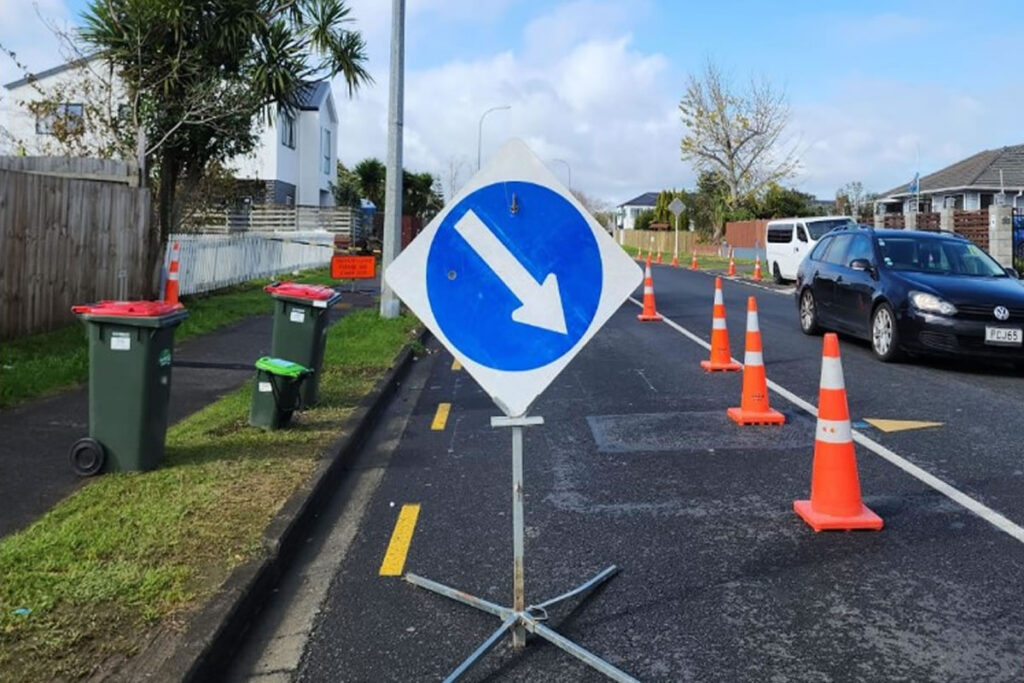Introduction
In New Zealand, maintaining road safety during construction, maintenance, or any event that disrupts regular traffic flow is of paramount importance. Whether you’re overseeing a small project or a large-scale event, having a well-developed Traffic Control Plan (TCP) and Traffic Management Plan (TMP) is crucial. These plans not only ensure the safety of workers and the public but also help in minimizing disruptions and maintaining smooth traffic flow. At Dynamixx Traffic Services, we specialize in creating comprehensive TCPs and TMPs tailored to the unique needs of each project. In this guide, we’ll walk you through everything you need to know about these essential plans.
What is a Traffic Control Plan (TCP)?
A Traffic Control Plan (TCP) is a detailed document that outlines the specific methods and measures to control traffic around a worksite or event. It provides information on how traffic will be managed during the disruption and includes details such as the placement of signs, barriers, cones, and other traffic control devices.
Purpose of a TCP: The primary goal of a TCP is to ensure the safety of all road users, including drivers, pedestrians, and cyclists, as well as the safety of workers on the site. It helps in preventing accidents, managing traffic flow, and ensuring that the worksite operates efficiently.
When is a TCP Required? A TCP is typically required for any activity that affects normal traffic flow, such as roadworks, construction projects, utility repairs, and public events.
Components of a TCP:
- Site Layout: A detailed map of the site showing the location of traffic control devices.
- Signage: Information on the type and placement of signs to guide traffic.
- Traffic Flow: Plans for maintaining or redirecting traffic flow around the site.
- Pedestrian Management: Measures to ensure the safety of pedestrians around the site.
- Emergency Access: Ensuring that emergency vehicles have access to the site at all times.
What is a Traffic Management Plan (TMP)?
A Traffic Management Plan (TMP) is a broader document that encompasses the entire strategy for managing traffic during a project. It includes the TCP but also covers additional aspects such as risk assessments, communication strategies, and contingency plans.
Purpose of a TMP: The TMP ensures that all aspects of traffic management are considered and that the project complies with relevant regulations and safety standards. It is a more comprehensive document that considers the broader impact of the project on traffic and road safety.
When is a TMP Required? A TMP is required for larger projects or events that have a significant impact on traffic. It is often a legal requirement for projects that involve road closures, major construction, or public events.
Components of a TMP:
- Risk Assessment: Identifying potential risks to traffic and road users and outlining measures to mitigate these risks.
- Traffic Control Plan (TCP): As mentioned, the TCP is a part of the TMP, detailing the specific traffic control measures to be implemented.
- Communication Plan: Strategies for communicating with the public, stakeholders, and authorities about the traffic management measures.
- Contingency Plans: Plans for dealing with unexpected events, such as traffic incidents or severe weather.
- Compliance and Monitoring: Ensuring that the traffic management measures comply with local regulations and that they are monitored throughout the project.
Key Differences Between TCP and TMP
While the TCP and TMP are closely related, they serve different purposes:
Scope: The TCP focuses on the specific traffic control measures at the site, while the TMP covers the entire strategy for managing traffic, including risk assessment and communication.
Detail: The TCP is more detailed in terms of the physical layout and traffic control devices, whereas the TMP provides a broader overview of the entire project’s traffic management.
Requirements: A TCP is typically required for smaller projects, while a TMP is necessary for larger projects with a more significant impact on traffic.
Steps to Develop a Traffic Control Plan (TCP)
Site Assessment: Begin by assessing the site to understand the traffic flow, potential hazards, and the impact of the project on road users.
Design the TCP: Create a detailed layout of the site, showing the placement of traffic control devices, signage, and pedestrian pathways.
Review and Approval: Submit the TCP for review and approval by the relevant authorities to ensure compliance with local regulations.
Implementation: Once approved, implement the TCP on-site, ensuring that all traffic control measures are in place before work begins.
Monitoring: Continuously monitor the site to ensure that the TCP is being followed and make adjustments as necessary.
Steps to Develop a Traffic Management Plan (TMP)
Risk Assessment: Conduct a thorough risk assessment to identify potential hazards and impacts on traffic.
Develop the TCP: As part of the TMP, develop a detailed TCP for the specific traffic control measures.
Communication Strategy: Plan how you will communicate with stakeholders, including the public, authorities, and emergency services.
Contingency Planning: Prepare for unexpected events by developing contingency plans.
Compliance and Monitoring: Ensure the TMP complies with all regulations and set up a monitoring process to track the effectiveness of the plan.
How Dynamixx Traffic Services Can Help?
At Dynamixx Traffic Services, we have extensive experience in developing and implementing both Traffic Control Plans (TCPs) and Traffic Management Plans (TMPs). Our team of experts works closely with you to ensure that your project is safe, compliant, and efficient. We handle everything from site assessment and plan development to on-site implementation and monitoring.
Conclusion
Understanding and implementing effective Traffic Control Plans (TCPs) and Traffic Management Plans (TMPs) is crucial for the safety and success of any project that impacts traffic. Whether you’re managing a small roadwork project or a large-scale event, having the right plans in place ensures that you meet regulatory requirements and protect the safety of everyone involved.
At Dynamixx Traffic Services, we are committed to providing top-notch traffic management solutions tailored to your specific needs. Contact us today to learn more about how we can help with your next project.
Contact Us Today
Ready to ensure the safety and efficiency of your next project? Dynamixx Traffic Services offers expert traffic management planning and on-site support to meet all your traffic control needs. Reach out to us for more information.



